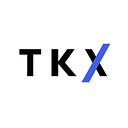Will MUX Protocol Become the 1inch for Perps? | TKX Weekly
by @Guaaronnnn
editor @FriedWagyuu
With perpetuals in such a highly competitive market, traders are always concerned about slippage and trading fees. Their goal is to make the best trades possible and maximize their capital. MUX Protocol may offer a solution to these concerns. Following in the footsteps of dYdX, GMX, and Gains Network, MUX is quickly gaining traction in the perpetual market and could potentially revolutionize the perp market.
Intro
MUX Network is a decentralized exchange that empowers users to trade cryptocurrencies with unparalleled advantages, including zero price impact, up to 100x leverage, and aggregated liquidity. It provides users with access to the following features:
- Up to 100x leveraged positions without any price impact on trades.
- Trading at optimal costs, with a 0.08% fee compared to 0.1% on GMX.
- Aggregated liquidity which reduces the possibility of slippage on trades.
- The ability to use a range of assets for collateral/margin, giving users more flexibility when trading.
Key Features
Leveraged Trading Protocol
MUX Protocol is a revolutionary decentralized leveraged trading protocol providing users with up to 100x leverage while eliminating counterparty and centralized exchange risks by trading against the MUX native pool.
Leveraged Trading Aggregator
The sub-protocol selects the best liquidity route, minimizes traders’ costs, and allows for increased leverage up to 100x on protocols like GMX. It also provides better liquidation prices and capital efficiency through its aggregator with GMX and Gains Network.
By alleviating the issue of liquidity fragmentation across multiple perps and chains, MUX aggregator enhances liquidity utilization leading to better trading outcomes.
Mechanism — Aggregator
MUX Aggregator, as a perpetuals aggregator, differs from DEX aggregator in that it not only compares costs, but also sorts out the margin across various platforms.
Liquidity Routing
Leveraged trading has many costs, such as price, spread, slippage, price impact, position fees, max leverage, maintenance margin, liquidation fees, and available liquidity. The MUX protocol compares these costs across different protocols and chooses the best option. This way, it minimizes the cost for traders while still allowing them to open positions.
Leverage Boosting
Different leveraged trading protocols usually have varying Initial Margin and Maintenance Margin requirements, which affects the maximum open leverage and maintenance leverage. Some protocols with deep liquidity may not offer the ideal maximum leverage to meet traders’ needs.
To provide more leverage options and improve trading experiences, the MUX Aggregator can supply additional margin on behalf of traders when opening positions on the underlying leveraged protocol, allowing for increased leverage and lower MM requirements.
Mechanism — Liquidity Pool
Universal Liquidity
The MUX Protocol unifies liquidity across networks using a broker module that monitors total liquidity and liquidity reserved for margin trading. This allows for higher capital efficiency on all deployed networks without having to move pooled assets around.
Dark Oracle
MUX Protocol uses a dark oracle to aggregate prices from multiple exchanges, including Binance, to ensure accurate and stable pricing. The dark oracle prevents front-running and toxic arbitrage, enabling zero price impact trading. MUX broker module obtains prices from the dark oracle to fill orders with zero price impact.
Revenue
The MUX Protocol allocates 70% of total protocol income to veMUX holders, based on the rate of Protocol Owned Liquidity (POR), and 70% of the remaining income to MUXLP stakers. The remaining 30% is used to purchase MUXLP and add it as protocol-owned liquidity.
Tokenomics
- MCB — The main token of the MUX Protocol. When users lock their MCB, they receive veMUX, which allows them to earn protocol income and MUX rewards.
- MUX — A non-transferable reward token that can be earned by holding veMUX or staking MUXLP.
- veMUX — Governance token of the MUX Protocol that provides voting power. When users hold veMUX, they are entitled to protocol income and MUX rewards. veMUX tokens are minted when users lock their MCB or MUX.
- MUXLP — Liquidity provider token for the MUX Protocol, like GLP for GMX. When users stake MUXLP, they earn protocol income and MUX rewards.
Currently, 46.7% of MCB has been locked into veMUX, with an average lock-up period of 777 days.
Data
The trading volume began to pick up in early March 2023. A large portion of the volume is on MUX Arbitrum and from gains through the aggregator. This provides a brief understanding of the volume composition.
It’s not surprising that traders’ PNL is a good yield for LP.
The overall performance of MUXLP has been between 15% to 50%.
Final Thoughts
From our perspective, MUX Protocol definitely has the potential to stand out in the competitive perps market. If you take DEX or spot trading as an example, users often choosen 1inch or Paraswap rather than Uniswap or Sushiswap because it provides the best price. Same to MUX, could be the 1inch in perps.
Liquidity fragmentation is always been an issue with more perps protocol and chains. MUX solve this issue by providing the go-to-place if people want to do perps. Also, the team has been shipping their product for quite a while, and they offers a complete user experience just like GMX.
Reference
https://dune.com/muxtrader/mux-stats
https://docs.mux.network/protocol/overview
https://stats.mux.network/public/dashboard/13f401da-31b4-4d35-8529-bb62ca408de8
About TKX CAPITAL
Website: TKX.CAPITAL
Twitter: @TKXCAPITAL
Build with us: HI@TKX.CAPITAL
Note: TKX CAPITAL do not offer any financial advice for retail investors.
